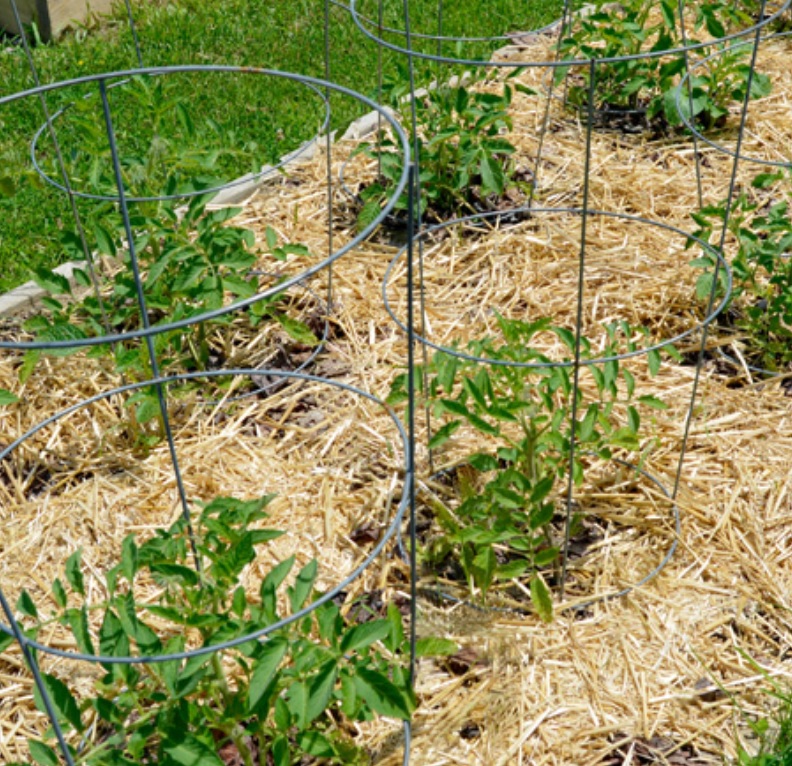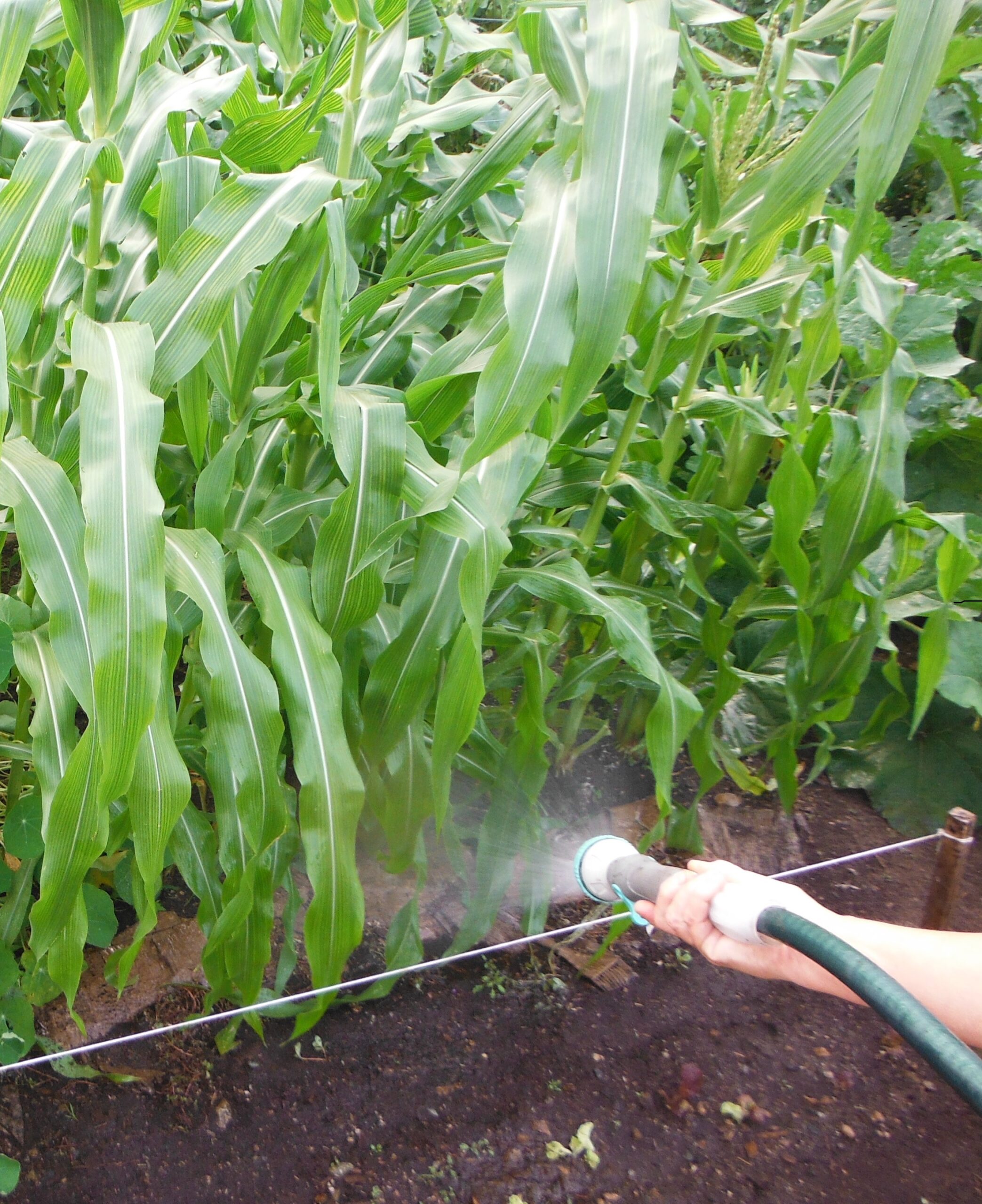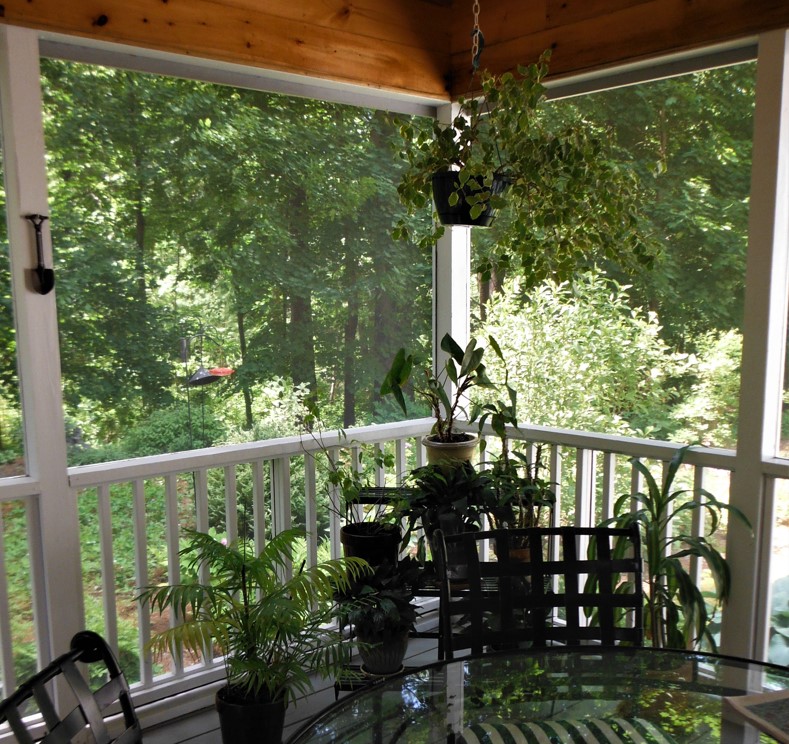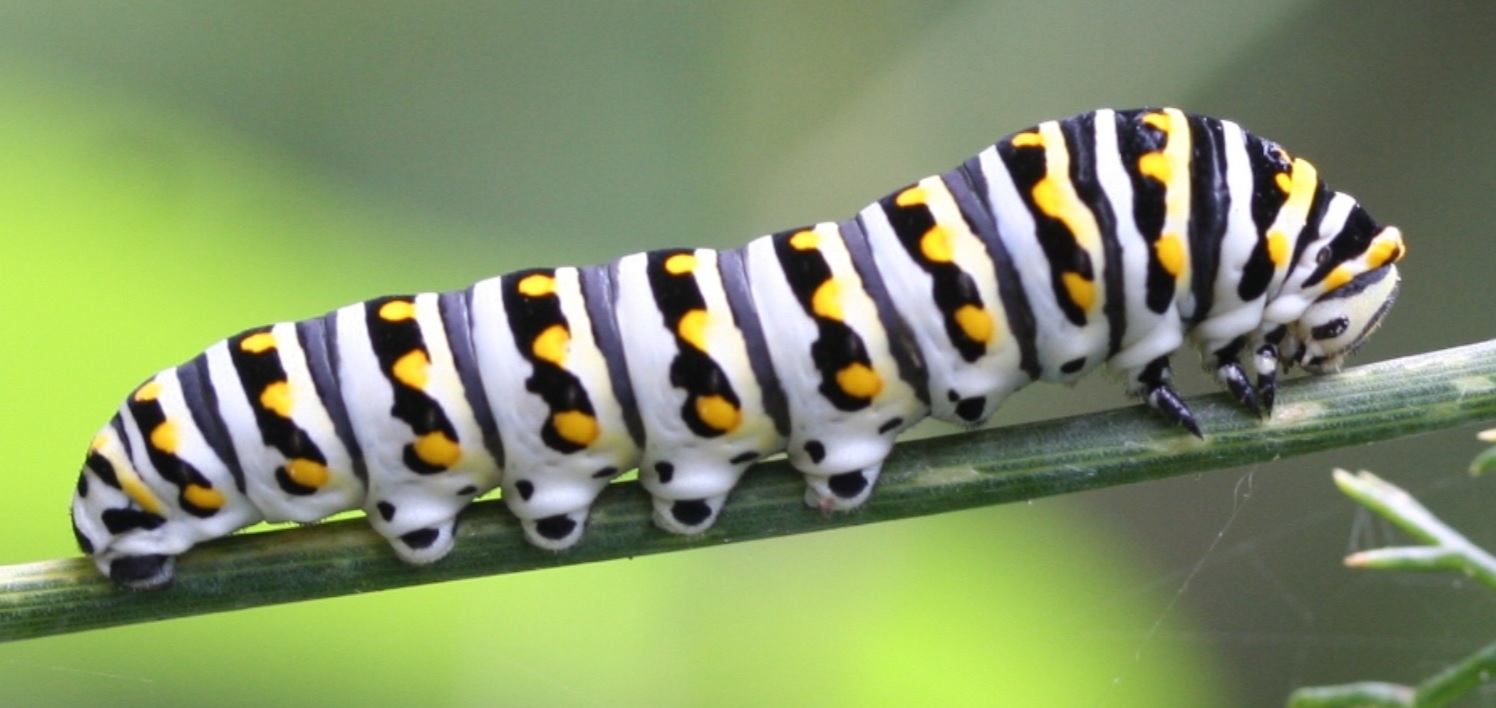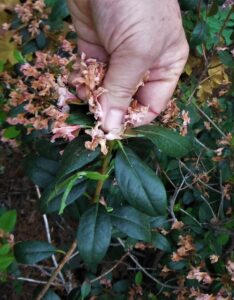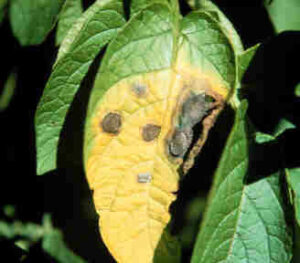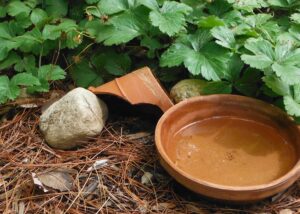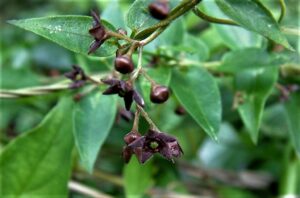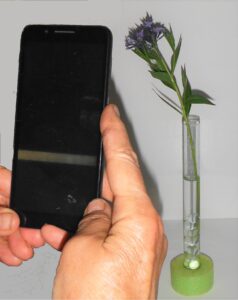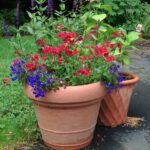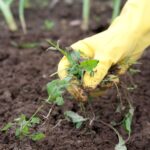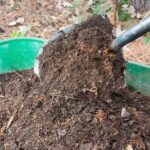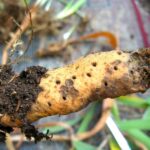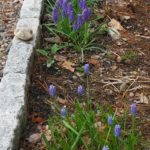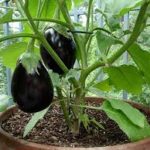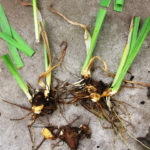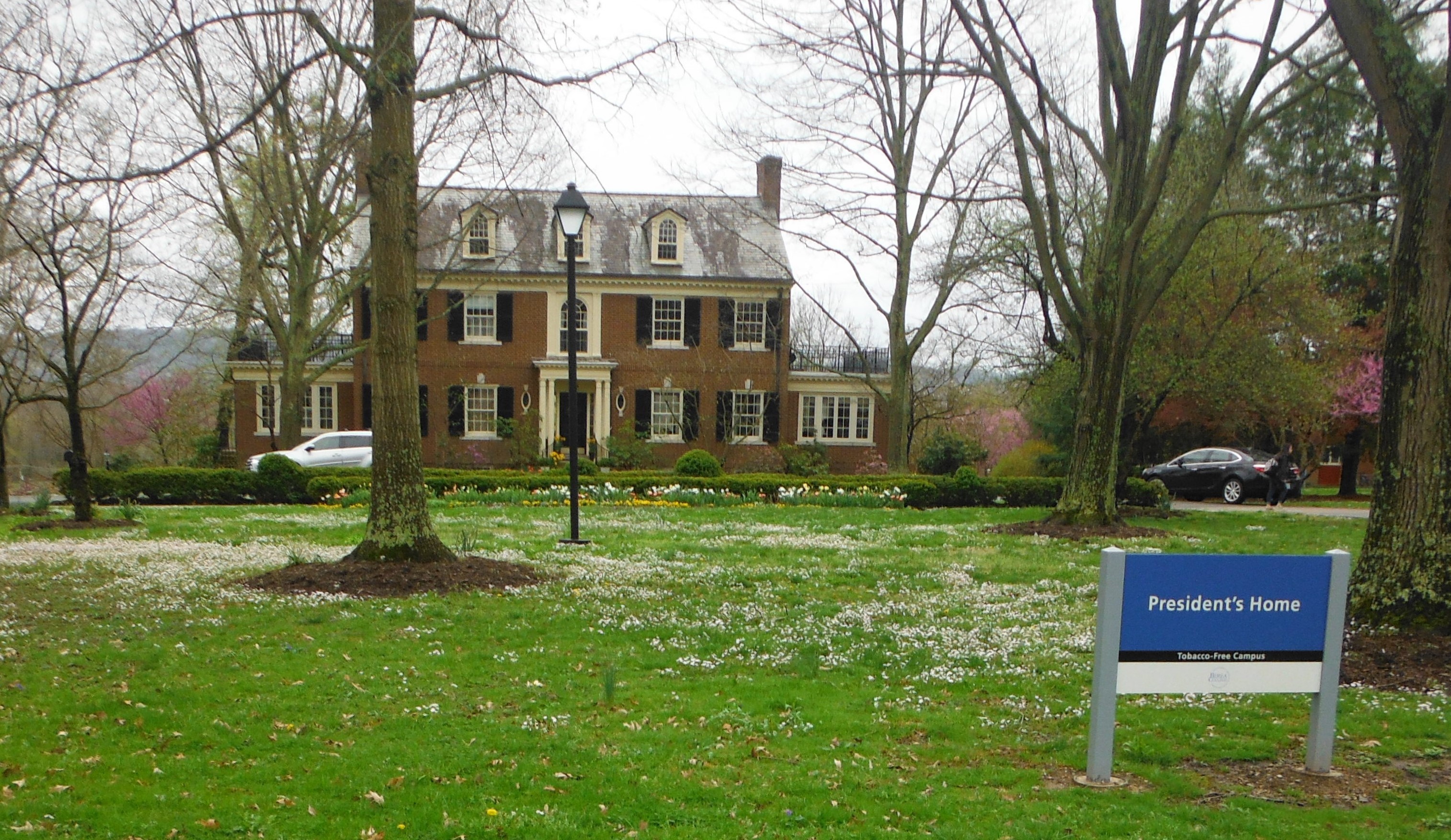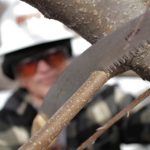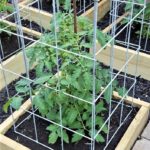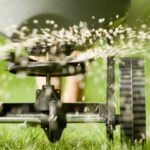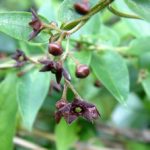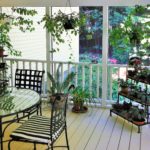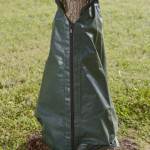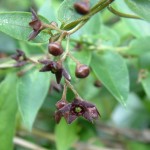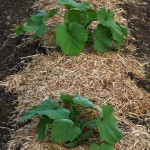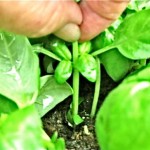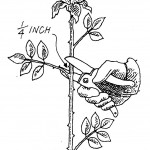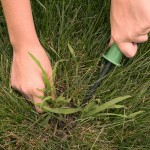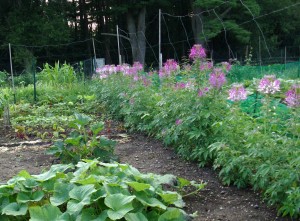Horticultural Hints – June
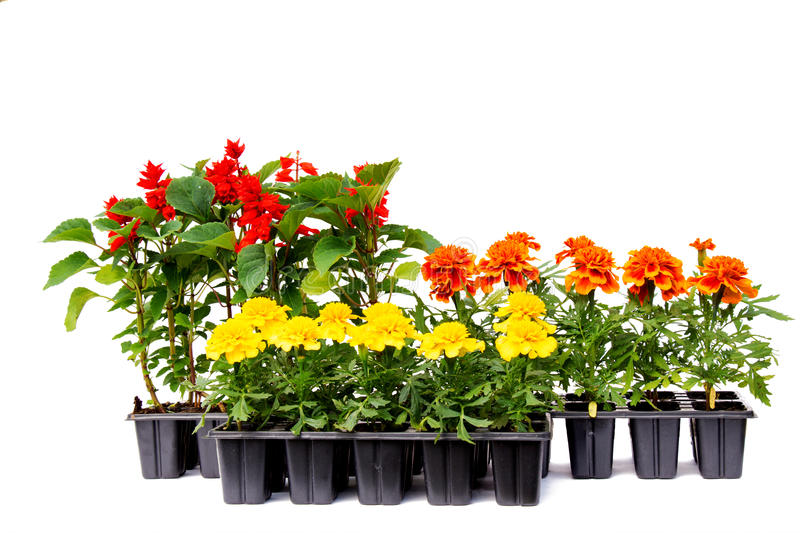 Now that Memorial Day is past, plant warm weather vegetables — tomatoes, peppers, eggplant, and basil; as well as the warm weather annuals in your flower beds. Marigolds, petunias, zinnias, salvia, and coleus will appreciate the hot weather. The bees visiting will pollinate your fruits and vegetables helping you have a summer full of produce.
Now that Memorial Day is past, plant warm weather vegetables — tomatoes, peppers, eggplant, and basil; as well as the warm weather annuals in your flower beds. Marigolds, petunias, zinnias, salvia, and coleus will appreciate the hot weather. The bees visiting will pollinate your fruits and vegetables helping you have a summer full of produce.
Putting down too much mulch is bad for plants because it excludes oxygen from reaching the soil. Yes, roots need oxygen to do their work. Keep mulch at two inches and it still excludes virtually all weeds, holds in water on hot days — and lets the garden breathe.
What’s the best mulch for your vegetable seedlings? A layer of heat-treated straw, shredded leaves, newspapers or grass clippings placed around your vegetable seedlings will conserve soil moisture without introducing weed seeds. Untreated straw contains weed seeds that will happily germinate in your garden.
Use row covers to exclude pests such as Mexican bean beetles, Colorado potato beetles and on other vegetables that do not need to be insect pollinated. Put covers over squash plants to protect them from squash borers and other pests, but remove them when you see the first flower blooms, they need the bees to produce squash.
If you are growing vining plants — cucumbers, tall (indeterminate) tomatoes, pole beans or flowering vines, construct and install sturdy supports now. While seeing a small tomato plant inside a large cage may seem strange, training the vines to the cage while they are young is relatively easy. The plants will resent you trying to weave them through the supports as they get older and less flexible. Velcro strips are an easy way to attach the plant quickly without damaging the stems. And if you buy supermarket lettuce, they come with Velcro-like strips that can be trimmed to an appropriate length do the job for free.
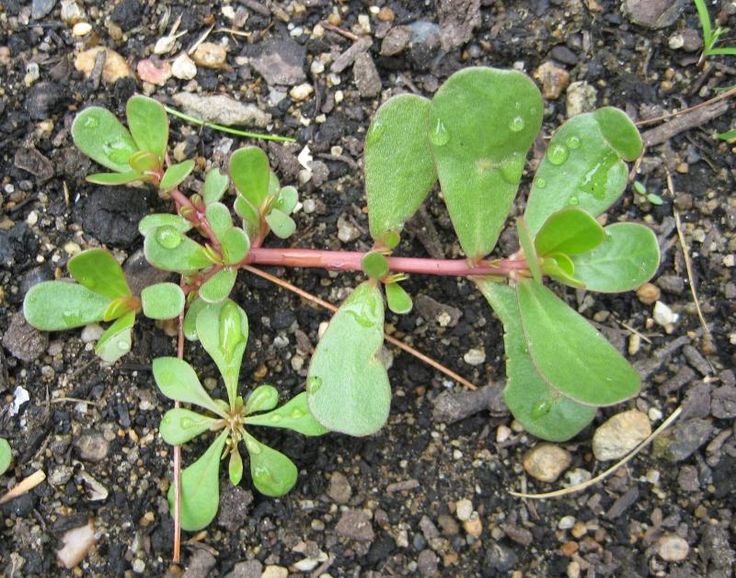 Weed, weed, weed because some weeds are already setting flowers and (then seeds) in order to multiply by the thousands. Pulling, digging or cutting weeds off at ground level is worth all the time you put in to it. Never ignore weeds. They are weeds because they steal light, water and nutrients from the plants you want to grow.
Weed, weed, weed because some weeds are already setting flowers and (then seeds) in order to multiply by the thousands. Pulling, digging or cutting weeds off at ground level is worth all the time you put in to it. Never ignore weeds. They are weeds because they steal light, water and nutrients from the plants you want to grow.
Avoid the temptation to treat your lawn now. We all want to keep our grass looking lush and green for June, but adding fertilizer this month will give a leg up to any weeds that have sprouted, and they grow faster than grass. Herbicides and pesticides will kill beneficial insects (those who eat other insects!) and earthworms in your turf grass, accelerating any pest outbreaks.
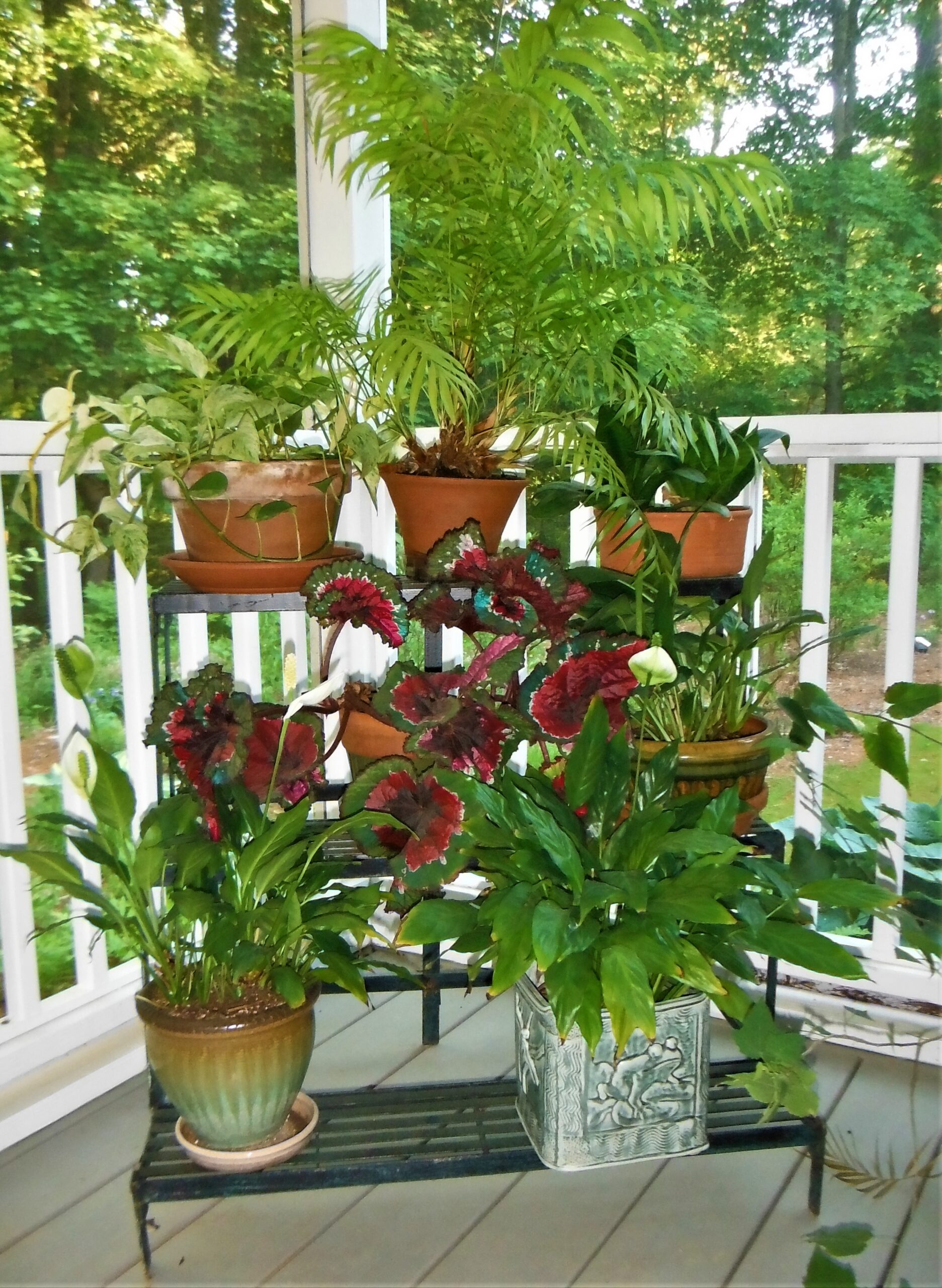 Set summer house plants out this month. Most require some shade, on a porch or under a tree, at least until they have adapted to their new environment. Remember to keep saucers under plants placed on the ground to reduce pests entering the containers and entering your home in the fall.
Set summer house plants out this month. Most require some shade, on a porch or under a tree, at least until they have adapted to their new environment. Remember to keep saucers under plants placed on the ground to reduce pests entering the containers and entering your home in the fall.
Swallowwort alert. Be aware of the growing colonies of invasive weeds such as black swallowwort. It looks like a vine as it grows, then a pretty purple flower appears and finally a pod full of seeds. While the seeds look somewhat like milkweed pods, they will kill monarch larva that hatch from eggs laid on these plants. Cut down the vines before the flowers ripen into seeds. Weed whackers, or clippers for small stands, mower for larger ones. But beware– they will re-sprout. Just keep cutting them until they don’t return. Or in your garden, dig out the root mass, bag it and leave it in the sun to kill. Do not compost or throw any swallowwort into other areas
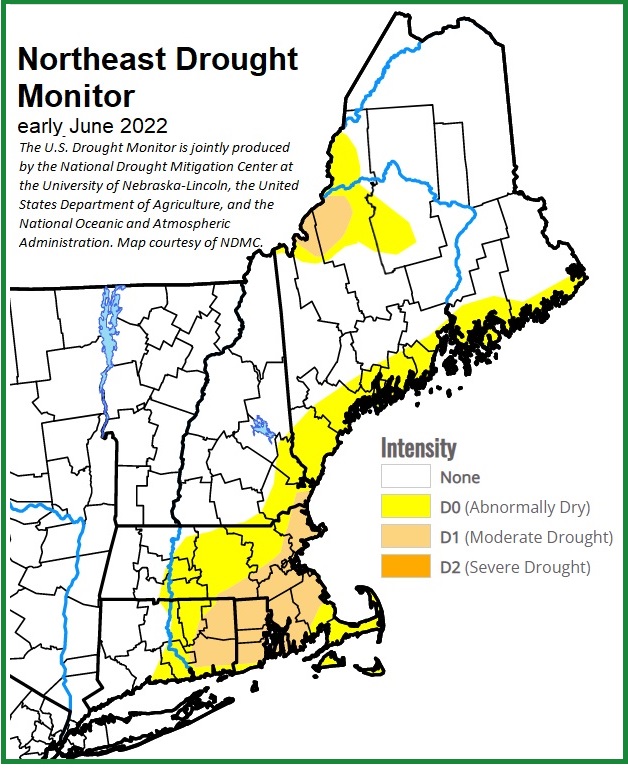 This has been the driest New England spring in a number of years. Usually, we get a lot of rain in the spring; it’s vital for all the trees and shrubs and perennials as they emerge from winter and send out flowers and leaves. This year we received virtually none. With the lack of rain, town watering restrictions have been issued earlier and with stricter rules. The Drought Monitor shows you where we are at the beginning of June. Two months ago, no part of the region was even ‘abnormally dry’.
This has been the driest New England spring in a number of years. Usually, we get a lot of rain in the spring; it’s vital for all the trees and shrubs and perennials as they emerge from winter and send out flowers and leaves. This year we received virtually none. With the lack of rain, town watering restrictions have been issued earlier and with stricter rules. The Drought Monitor shows you where we are at the beginning of June. Two months ago, no part of the region was even ‘abnormally dry’.
Don’t even think about using sprinklers which can lose half the water they put out to evaporation. Trees and shrubs are costly to replace and take a long time to grow to size. To maximize water where it is needed, irrigate new trees with drip bags or by direct hand watering into the tree basin. Perennials are your next priority—they will tell you when they need water by drooping early or late in the day (Drooping in the middle of the day only means the roots can’t keep up with the heat—not that the plant is under serious stress.)
Hand watering is the way to take care of your flower and vegetable gardens. Water early in the day to prevent diseases from taking advantage of the wet leaves. And, pick vegetables and flowers when the leaves are dry to avoid spreading any diseases that may have found their way onto your plants.
Stop any lawn treatments during the heat of summer. Move the mower blade to its highest setting, preferably three inches. At that height the grass can shade out most weeds and also keep its roots cooler during the hottest days. Lawns do not need to be watered, they can survive periods of dryness, recovering naturally when rain returns. A brown lawn is the sign of a conscientious gardener this year.
Give your houseplants a summer vacation. A covered porch is perfect because houseplants generally aren’t used to direct sun. Don’t place them on the ground where they’ll pick up hitchhiking insects and soil-borne diseases. Remember also, they’ll require more frequent watering.
Increase your vegetable production by tucking in native flowers such as bee balm and echinacea (cone flowers) into the corners of your vegetable garden. Those native flowers will attract the pollinators you need for a successful crop, make your garden pretty to look at, and give the native pollinators – bees and butterflies – a welcome feeding station.
Herb advice. Herb flavors are strongest early in the day, so do your harvest then and refrigerate until you are ready to use them. Pinch back the tops of annual herbs to promote bushier growth, and always cut or pinch off any flowers the herb produces – you want the herb’s leaves – because once the flower is pollinated, the plant ‘thinks’ its work is done.
Parsley and dill are food for swallowtail caterpillars and so attract swallowtail butterflies. Add few extra ‘sacrificial’ plants in your flower garden or near your house to enjoy these beautiful creatures and applaud the young caterpillars as they chew through them.
Peonies, rhodies and other spring bloomers. Once the blooms have died, it’s time to prune spring blooming shrubs such as rhododendron, spirea and lilac; and trees such as magnolia and dogwood for size or shape. Doing it now means you will not risk removing next year’s flowers. Even if you do not need to prune, remove all dead flower heads to eliminate a site for diseases and to conserve plant energy which would go producing unwanted seeds.
Mulch. It’s finally warm enough to add fresh mulch around trees and shrubs. Your layer should be no more than two inches deep, and never touch the bark of the plant’s trunk. Instead, pull the mulch at least an inch away from the bark of any plant.
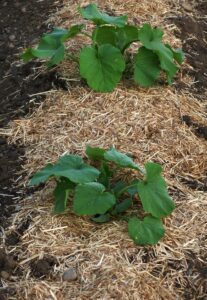 In the vegetable garden. The soil and air are warm—plant tomatoes, peppers, eggplant, squash, melons and other summer crops now. After you’ve finished planting the summer crops, remember a mulch of heat-treated straw around them will reduce diseases caused by infected soil splashing up on leave as well as preserve moisture around the roots. It will last all season, can’t add weeds (heat treating kills weed seeds) and improves the soil as it breaks down next winter.
In the vegetable garden. The soil and air are warm—plant tomatoes, peppers, eggplant, squash, melons and other summer crops now. After you’ve finished planting the summer crops, remember a mulch of heat-treated straw around them will reduce diseases caused by infected soil splashing up on leave as well as preserve moisture around the roots. It will last all season, can’t add weeds (heat treating kills weed seeds) and improves the soil as it breaks down next winter.
Early blight is the most common source of disease in growing tomatoes. Endemic in our soil, early blight can cause damping-off, collar rot, stem cankers, leaf yellowing and fruit rot. Two inches of a clean, organic mulch will reduce your soil-borne diseases as well as keeping weeds down and the soil cooler and moister on hot days.
Pinch back the tops of annual herbs to promote bushier growth. Herb flavors are strongest early in the day, so do your harvest then and refrigerate until you are ready to use them.
Leave your grass longer. Move your mower blade to its highest setting; preferably three inches – a height where the grass will shade out most new weeds. The longer grass keeps roots cooler during hot days when it is more susceptible to disease and insect damage in the summer. If your lawn is cut by a service, specifically ask them to raise the blades on their machines to that height when mowing your lawn.
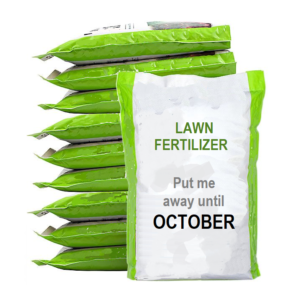 Let your lawn rest. Stop any lawn treatments until the end of summer. Fertilizer promotes vigorous top-growth at a time when the rainfall will be decreasing, and when the increasing heat is telling the grass to slow down. Herbicides (weed-and-feed, broad-leaf herbicides) will damage grass roots in the heat of summer. Pesticides are indiscriminate killers, killing off beneficial insects along with pests. Unless you identify a specific pest. there are far more ‘good guys’ out there that keep the lawn and garden going by eating the bad guys.
Let your lawn rest. Stop any lawn treatments until the end of summer. Fertilizer promotes vigorous top-growth at a time when the rainfall will be decreasing, and when the increasing heat is telling the grass to slow down. Herbicides (weed-and-feed, broad-leaf herbicides) will damage grass roots in the heat of summer. Pesticides are indiscriminate killers, killing off beneficial insects along with pests. Unless you identify a specific pest. there are far more ‘good guys’ out there that keep the lawn and garden going by eating the bad guys.
Keep your ‘friends’ close. Well, sort of. After birds, you best friends in the garden are garter snakes, toads and frogs. Watch out for them. Amphibians and reptiles eat hundreds of insects every day, making them your friends – even though some of us are not comfortable when surprised by one. An old terracotta pot (even a broken one) can serve as a home for these friends.
It’s swallowwort season. A mild winter and early spring have given black swallowwort an ominous head start. It looks like a vine as it grows, then a pretty purple flower appears (in June this year) and finally a pod full of seeds (July and August). While the pods look somewhat like those on milkweed, they will kill monarch butterfly larva that hatch from eggs laid on these plants. Pull the entire plant (it will come out easily) by hand before the flowers ripen into pods. Keep an eye on the area because swallowwort may re-appear. Do not compost or throw any swallowwort into other areas. It will aggressively cover everything in your garden. Bag and add to your trash any swallowwort you find on your own property, then encourage your neighbors to do the same.
Show off your best garden specimens at a virtual flower show. Covid-19 put an end to traditional flower shows for this year, but National Garden Clubs, Inc. has come up with a wonderful work-around: a nationwide virtual flower show. If you’re a garden club member, and your club is affiiliated with NGC read on. Otherwise, skip to the next hint and pause to wonder why you’re not part of an NGC-affiliated club, because this is a really neat event.
Between June 1 and June 15, walk your garden and pick out the specimens you’d choose for entry into a flower show if it were being held locally. Then, photograph them as described on the NGC website (http://www.gardenclub.org/resources/2020-convention/HOW-TO-PHOTOGRAPH-FOR-THE-VIRTUAL-FLOWER-SHOW.pdf), fill out the entry form (http://www.gardenclub.org/resources/2020-convention/NGC-VFS-Horticulture-Entry-Form.pdf) for each specimen, and email the photos to the address on the form. All entries will be professionally judged, ribbons will be awarded, and winners will appear on the National Garden Clubs website.
Our chilly, wet spring is finally behind us. It’s time to put out tender annuals. Whether you are planting geraniums and impatiens or verbena and angelonia, annuals can now safely be put in the ground or in your container gardens.
In the vegetable garden, it’s time to plant tomatoes, peppers, eggplant, melon, summer and winter squash. Use cutworm collars on tomatoes, eggplant and peppers. Cutworms chew off your plants just above ground level but can be deterred by a simple collar of stiff cardboard or a bottomless can pushed one inch or more into the soil around the plant’s stem.
Keep up your weeding. Weeds are your plants enemies, stealing water, nutrients and sunlight. Straw or weighted newspapers placed between rows effectively block most weeds in the vegetable garden; reducing your workload and giving you more time to enjoy the garden.
As the days get longer and hotter, make certain your garden doesn’t dry out. Plants under stress will not provide what you are growing them for. Pine needles, shredded bark, and leaf mold are all attractive beneficial mulches for flowers and vegetables that reduce weeds and preserve water — but no more than two inches of mulch! Too much is as bad as too little.
Side dress the beds of perennials such as rhubarb and asparagus beds after the harvest is finished with composted manure or other organic fertilizers. These plants are heavy feeders and need to replenish their reserves for next year.
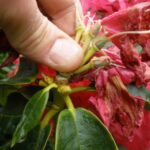 When your rhododendrons (and remember azaleas are rhododendrons) are finished blooming, remove the dead flower heads. The plants will look better and not waste energy producing seeds you don’t want.
When your rhododendrons (and remember azaleas are rhododendrons) are finished blooming, remove the dead flower heads. The plants will look better and not waste energy producing seeds you don’t want.
Now is the time to prune spring blooming shrubs before they set next year’s flowers. As you prune, use this clean-up process to also set the future shape of the plant. Left on their own, most shrubs want to get larger than the space you’ve allotted them. Your spring pruning will ensure the plant stays in the site as you envisioned when first planted.
When your bearded iris finish blooming, it’s time to divide them. Dig up the entire clump of tubers and divide it into two-armed ‘fans’. These will provide a good display next year. Because you have reduced the roots, also cut the foliage back by half. And discard any tubers that show signs of iris borer infestation.
Add native plants to your landscape. Native plants require less maintenance than lawns, mulch tree, shrub and perennials bed. Once established, they require less water, no fertilizers and no pesticides. An additional benefit is they attract native birds, butterflies and admirers.
Give your houseplants a summer of rejuvenation. Now that nighttime temperatures don’t go lower than 55 degrees, set houseplants out on a screened porch where they’ll get more sun and fresh air. Their time in a new environment will also promote growth and blooming.
What happened to spring? All of our gardens have been delayed by too much rain and cold temperatures this spring. Instead of harvesting and replanting, we are still doing first plantings of many vegetables. As the soil warms, plant beets, carrots, corn, and squash. The soil must be warmer – think 80 degrees – before you transplant eggplant and peppers.
Hyacinths yield dividends. In my garden, grape hyacinths are permitted to go to seed and self-sow, providing many new plants in the future. Next year you will get only greens (which look like grass) but, in a couple of years, you will have greatly increased the number of hyacinth flowers. Daffodils, on the other hand, are best deadheaded after the flower has passed to put strength back in the strength back in the bulb. This way the bulb will produce bulbils that in a couple of years will look like small bulbs and begin producing more daffodil flowers.
Cage your tomatoes. Don’t leave your tomatoes lying on the ground, they need to be grown on a trellis or in cages. The fruit is more likely to rot if sitting on wet soil. Mulching around the base of tomato plants will keep the soil evenly moist and reduce the incidence of blossom end rot. And feel free to cut off the topmost branches if your tomatoes plants are getting too tall for their cage –or for you to harvest.
Vegetables in containers. Many vegetables grow very well in containers… and not just the ones advertised as for container gardens. Start with a larger pot than you think the plant needs: vegetables grow quickly once established. More importantly, a larger pot accommodates the reality that, on a sunny day, soil in a container will become quite warm; drying out and baking the roots. You may have to water twice a day during the hotter stretches. If the pot is outside and has good drainage, over-watering is almost impossible. Use commercial soil mixes that are sterile so not to introduce disease and vermiculite to keep the soil from compacting.
Invasives alert. Black swallowwort – an invasive vine that has become entrenched across southern New England and is a danger to monarch butterflies – grows in sunny areas along fence lines and where lawns meet wooded areas. If you pull it out by its shallow roots now, it will have difficulty re-growing or flowering and developing pods. This is an insidious plant that will keep trying to grow back (and spread) unless it is repeatedly cut down or, better yet, pulled out. Be certain to send the plant and its roots to be incinerated.
Divide your irises. When they have finished flowering, bearded irises that have been growing for three or more years should be dug up (they are shallow so it’s easy) and divided. The ones in the center are the oldest and weakest. Discard those, add some compost to the area and replant the ‘fans’ that you have cut apart with a sharp knife. (I use hand wipes to clean the blades between cuts, preventing any disease spread-you can also keep a small container or bleach or alcohol on hand for cleaning your knife.) Because there will root loss, cut the foliage back by half. Place the rhizomes no closer than three inches apart — six to eight inches allow for more growth, cover with two inches of soil and water well.
Free your lawn. Lawns that include weeds and wildflowers can be beautiful—a recent trip to Berea in Kentucky included a stop at the College President’s home with just such a lawn, complete with a sign explaining the benefits of allowing the “weeds” to thrive. Our last lawn contained clover and violets—the former to help naturally feed the grass and the latter because they are prettier than grass!
Pruning schedule. Now is a perfect time to prune shade trees. Though it can be done at any time, bark callusing (a good thing) around the pruning scars, will begin almost at once now.
Asparagus tips. If you are lucky enough to have an asparagus bed, remember that you should stop cutting the spears by late June to ensure the plants can replenish the strength in the roots for next year’s crop. A couple of inches of compost or aged manure makes a great fertilizer for the bed.
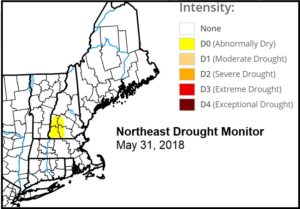 Soil moisture. Because of a wet March and April, soil moisture across most of New England is adequate, though a dryer-than-average May could become an issue as we get into summer. For now, the lone area of ‘abnormally dry’ is southwestern New Hampshire. Two years, we began June with almost the entire region in an entrenched drought.
Soil moisture. Because of a wet March and April, soil moisture across most of New England is adequate, though a dryer-than-average May could become an issue as we get into summer. For now, the lone area of ‘abnormally dry’ is southwestern New Hampshire. Two years, we began June with almost the entire region in an entrenched drought.
Now that Memorial Day is past, plant your warm weather vegetables — tomatoes, peppers, eggplant, and basil; as well as the warm weather annuals in your flower beds. Marigolds, petunias, zinnas, salvia, and coleus will appreciate the hot weather to come and brighten your garden containers all summer long.
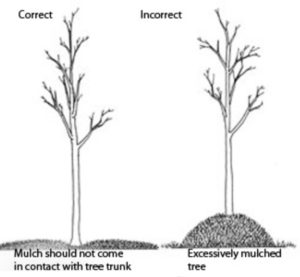
By now, we all should know ‘volcano’ mulching kills trees and shrubs; yet every year some homeowners do it anyway
Putting down too much mulch is injurious to plants because it excludes oxygen. Yes, roots need oxygen to do their work. Keep mulch at two inches and it still excludes virtually all weeds, holds in water on hot days — and lets the garden or tree breathe.
What’s the best mulch for your vegetable seedlings? A layer of heat-treated straw, shredded leaves, newspapers or untreated (weed control agents in many lawn products will also kill or stunt vegetable seedlings) grass clippings placed around your vegetable seedlings will conserve soil moisture without introducing weed seeds. Ordinary straw or hay is inexpensive, but contains weed seeds that will happily germinate in your garden.
Use row covers to exclude pests such as Mexican bean beetles, white cabbage butterflies that lay the eggs for cabbage worms, Colorado potato beetles, and other vegetables that do not need to be insect pollinated. Put covers over squash plants to protect them from squash borers and other pests, but remove them when you see the first flower bloom—they will need to the bees to produce squash.
If you are growing vining plants — cucumbers, tall (indeterminate) tomatoes, pole beans or flowering vines, construct and install sturdy supports now. While seeing a small tomato plant inside a large cage may seem strange, training the vines to the cage while they are young is relatively easy. The plants will resent you trying to weave them through the supports as they get older and less flexible. Velcro strips are an easy way to attach the plant quickly and without damaging the stems. And if you buy supermarket lettuce, they come with Velcro-like strips that do the job for free.
Weed, weed, weed because some weeds are already setting flowers and (then seeds) in order to multiply by the thousands. Pulling, digging or cutting weeds off at ground level is worth all the time you put in to it. Weeds in a vegetable or flower bed should never be ignored. They are weeds because they steal light, water and nutrients from the plants you want to grow.
Avoid the temptation to treat your lawn now. We all want to keep our grass looking lush and green for June, but adding fertilizer this month will give a leg up to any weeds that have sprouted, and they grow faster than grass. Herbicides and pesticides will kill beneficial insects (those who eat other insects!) and earthworms in your turf grass, accelerating any pest outbreaks.
Set summer house plants out this month. Most require some shade, on a porch or under a tree, at least until they have adapted to their new environment. Remember to keep saucers under plants placed on the ground to reduce pests entering the containers and entering your home in the fall.
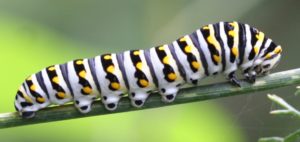 Parsley and dill are food for swallowtail caterpillars and so attract swallowtail butterflies. Add few extra ‘sacrificial’ plants in your flower garden or near your house to enjoy these beautiful creatures and applaud the young caterpillars as they chew through them.
Parsley and dill are food for swallowtail caterpillars and so attract swallowtail butterflies. Add few extra ‘sacrificial’ plants in your flower garden or near your house to enjoy these beautiful creatures and applaud the young caterpillars as they chew through them.
Swallowwort alert. Be especially aware of the growing colonies of invasive weeds such as black swallowwort. It looks like a vine as it grows, then a pretty purple flower appears and finally a pod full of seeds. While the seeds look somewhat like milkweed pods, they will kill monarch larva that hatch from eggs laid on these plants. Your only hope is to cut down the vines before the flowers ripen into seeds. Weed whackers, or clippers for small stands, mower for larger ones. But keep an eye on the area because they will re-sprout. Just keep cutting them until they don’t return. Or in your garden, dig out the root mass, bag it and leave it in the sun to kill. Do not compost or throw any swallowort into other areas. Left alone they cover native vegetation and everything in your garden.
Previous years’ June Hints:
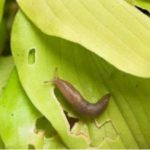 May and early June have seen a string of rainy days in New England. With that much-welcome rain, unfortunately, has come an equally unwelcome pest: slugs. Look over the undersides of leaves in your garden (especially low-growing perennials) and, if you see any slugs, assume there are more lurking in the soil or mulch. Skip the cutesy internet-fed slug remedies and go for what works: iron-phosphate-based pellets, available under several brand names in most nurseries. Place them around the base of plants and replenish monthly as long as it keeps raining.
May and early June have seen a string of rainy days in New England. With that much-welcome rain, unfortunately, has come an equally unwelcome pest: slugs. Look over the undersides of leaves in your garden (especially low-growing perennials) and, if you see any slugs, assume there are more lurking in the soil or mulch. Skip the cutesy internet-fed slug remedies and go for what works: iron-phosphate-based pellets, available under several brand names in most nurseries. Place them around the base of plants and replenish monthly as long as it keeps raining.
Our (average) last frost date is passed. It’s finally time to put out those tender annuals and vegetables. Whether you are planting geraniums and impatiens, or elephant ears and begonias, annuals can be put in the ground or in containers now safely. Remember dead-heading keeps annuals blooming.
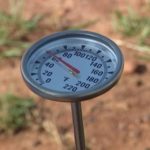 In the vegetable garden, provided your soil temperature is above 70 degrees, it’s time to put out the eggplant, tomatoes, and peppers you purchased as sets. Use cutworm collars on tomatoes, eggplant and peppers. Plant seeds for melons, summer and winter squash, and corn. On the subject of corn, if you keep getting great stalks but low yields, it may be because of the way you plant. Because corn is wind pollinated, it should be planted in squares or rectangles with at least five rows in each direction. One or two rows of corn are insufficient to insure good pollination.
In the vegetable garden, provided your soil temperature is above 70 degrees, it’s time to put out the eggplant, tomatoes, and peppers you purchased as sets. Use cutworm collars on tomatoes, eggplant and peppers. Plant seeds for melons, summer and winter squash, and corn. On the subject of corn, if you keep getting great stalks but low yields, it may be because of the way you plant. Because corn is wind pollinated, it should be planted in squares or rectangles with at least five rows in each direction. One or two rows of corn are insufficient to insure good pollination.
As the days get longer and hotter, make certain your garden goes not dry out. Vegetables under stress will not provide the produce you want. And keep up your weeding. They are your plants enemies, stealing water, nutrients and sunlight. Straw or weighted newspapers placed between rows effectively block most weeds.
Side dress rhubarb and asparagus after the harvest is finished with composted manure or an organic fertilizer. They are heavy feeders and need to replenish their reserves.
Cover blueberries, raspberries, and strawberries with protective netting or fencing to prevent the birds and the four-footed predators from getting your crop. Pine needles, shredded bark, and leaf mold are all attractive beneficial mulches that reduce weeds and preserve water—but only 2 to 3 inches, and never touching the stems!
Tick season. Be very aware of the deer ticks that are everywhere–or so it seems. It’s not just Lyme Disease anymore. Every year medical researchers link ticks to another serious illness. Use sprays effective against ticks before going outside, check yourself (and your children) daily and call your doctor if you think you may have been bitten.

Removing spent flowers from lilacs and rhodies lets the shrub put strength into its roots and leaves instead of into seeds
In the flower garden When your rhododendrons (and remember azaleas are rhododendrons) are finished blooming, remove the dead flower heads. They waste the plant’s energy setting useless seed and can contribute to diseases such as botrytis and blight later in the summer. It’s also the time to prune any spring bloomers such as forsythia, peonies, lilacs before they set next year’s flower buds.
Lawn care. Stop any lawn treatments until the end of summer. Herbicides (weed and feed, broad leaf herbicides) will damage grass roots in the heat of summer. Pesticides are indiscriminate killers and there are far more ‘good guys’ that keep the lawn and garden going. Move the mower blade to its highest setting; preferably three inches. At that height the grass will shade out most weed and also keep its roots cooler during hot days. Watch out for garter snakes as well as toads and frogs as you mow. They eat hundreds of insects every day, making them your friend – even though some of us are not comfortable when surprised by one.
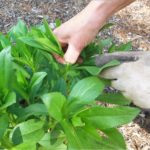
Pinch back perennials like this shasta daisy to get more blooms on a better-shaped plant later this summer
If you want to keep garden perennials from getting too leggy and flopping over as the summer goes on, cut them back by one-third to one-half now. Mums, phlox, salvias, asters and even autumn joy sedum all benefit from the trimming. You will get flowers slightly later, but there will be more to enjoy — plus, you won’t have to spend time staking them
The nastiest weed in town. Look for growing colonies of invasive weeds, especially black swallowwort. It looks like a vine as it grows, then a pretty purple flower appears and finally a pod full of seeds. While the seeds look somewhat like milkweed pods, they will kill monarch larvae laid on the plants. Your only hope is to cut down the vines before the flowers ripen into seeds. Weed whackers – or clippers for small stands – will stop them temporarily, but keep an eye because they will re-sprout. Keep cutting them until they don’t return. Or in your garden, dig out the root mass, bag it and leave it in the sun to bake to death. Left alone they cover native vegetation or anything in your garden. Think of them as the murderer of butterflies and a despoiler of your environment.
Houseplants The days and nights are now warm enough to move houseplants out for a summer vacation. As you place them outside, start in the shade of a tree or on a porch. Move them gradually into more sun to avoid sun scald or even death. Check frequently to ensure they have not dried out in the hotter environment.
Previous Years June Hints…
Rain at last! This has been the driest New England spring I remember; almost certainly one for the record books. In a normal year, we get a lot of rain in the spring—vital for all the trees and shrubs and perennials as they emerge from winter and send out flowers and leaves. This year we received virtually none until May 31. No matter how much rain falls before you read this, we will still behind on the water necessary for healthy plant growth. But with the lack of rain, town watering restrictions went in earlier and with stricter rules. So what’s a gardener to do?
First, keep your priorities straight. Don’t even think about using sprinklers. Evaporation can cause the loss of half the water before it ever reaches your plants. Trees and shrubs are costly to replace and take a long time to grow to size — water them with drip bags or by direct hand watering into the tree basin. Perennials are your next priority. They will tell you when they need water by drooping early or late in the day (Drooping in the middle of the day only means the roots can’t keep up with the heat; not that the plant is under serious stress. Drip hoses laid through beds is another option. Lawns do not need to be watered, they can survive periods of dryness, recovering naturally when rain returns.
Vegetable garden. Did you take advantage of those 80+ degree days to put out your hot weather crops? Unfortunately Mother Nature once again proved she can’t be trusted in May by starting June with several days of temperatures in the 40’s and 50’s. If you are lucky, your tomatoes, eggplants, squash and cucumbers may survive without significant damage. It’s also possible that they will be stunted by the colder temps and never reach their true potential. If you have room, add an additional tomato or eggplant after the temperatures warm and check its progress against any planted earlier in May. But remember that additional fertilizer is never a solution for a stressed plant. Fertilizer should only be used when a soil test says you need the additional nutrients.
When the weather warms again, get your second square of corn planted, put squash seeds in the ground, plant a fresh row of beans and another of lettuce. This should ensure an abundance of midsummer produce. Don’t forget to tuck some native flowers such as bee balm and echinancea into the corners of the garden. It will attract the pollinators you need for a successful crop, make your garden pretty to look at, and give the native pollinators – bees and butterflies – a badly needed feeding station.
Weeds may have been slowed by the dry weather but they will love the rain. Expect to find them popping up in garden beds very soon. In the immortal words of Roger Swayne, the best weed control is infanticide: get rid of them while they are small; before their roots become too well entrenched to hand pull without dislodging the plants you want. So pull, hoe and dig,
Be especially aware of the growing colonies of invasive weeds such as black swallowwort. It looks like a vine as it grows, then a pretty purple flower appears and finally a pod full of seeds. While the seeds look somewhat like milkweed pods, they will kill monarch larva laid on the plants. Your only hope is to cut down the vines before the flowers ripen into seeds. Weed whackers (or clippers for small stands) will stop them temporary, but keep an eye because they will resprout. Just keep cutting them until they don’t return. Or in your garden, dig out the root mass, bag it and leave it in the sun to kill. Left alone they cover native vegetation or anything in your garden. Think of them as New England kudzu.
Previous Years June Hints
In the garden. We’ve cleaned up flower and shrub beds, laid mulch and now, while they’re still small, it’s time to go back and remove the weeds that popped up. Weeds steal light and water from your plants and can act as host plants for disease and bad insects. Kill them while they are young because a mature weed can release up to a million seeds in a year!
Shearing back late summer and fall blooming perennials now, such as mums, asters, sedums and Joe Pye weed (Eupatorium purpureum), will make them shorter, but bushier with more flowers. Always cut down the stalk to a leaf node, never in mid-stalk. Re-blooming perennials such as salvia, coreopsis and all annuals should be pruned back after blooming to facilitate the next bloom and prevent the plant from wasting energy producing seeds.
Summer is also tick season and Massachusetts ticks now host a variety of diseases from Lyme to Babesiosis to Ehrlichiosis. Ticks migrate into your garden not just on deer but almost any warm-blooded animal. To protect your health, perform a thorough tick check every time you come in from the garden and never assume that a shower or bath will remove them. And don’t forget to check any pets that venture outdoors for unwanted passengers.
* * * * *
A cold wet spring is reluctantly giving way to summer in the vegetable garden. Waiting to plant your hot weather crops like tomatoes, peppers, melons and squash does not mean a later crop and prevents them from being stunted by cold temperatures in May. But they should all be in the ground now. Replant lettuce, carrots, beans and corn to keep the harvest going through the summer.
Native the Mediterranean area, most herbs like it dry and lean. (Basil is the exception) Don’t overfeed or overwater them, but do remember to cut them back regularly to use in the kitchen and to promote new growth.
* * * * *
Do you have pines that are getting too big for their allotted space or too lanky for your taste? The bright green candles (see photo) are the new growth and the source of new branches. You can keep pine trees or shrubs small and bushier by cutting the candles in half now.
The effects of last winter’s extreme cold continues to show up on trees and shrubs. Any branch that has not leafed out is almost certainly dead. Pruning back the winter kill allows the plant to get on with the business of growing new leaves and branches that should fill in any gaps in the next year or two. Use sharp pruners (for cuts up to one-half inch and hand saws for anything larger.) Anything that cannot be cut from the ground should be left to professionals.
* * * * *
Look for garden tours sponsored by garden clubs in your area. Garden clubs are responsible for many of the civic plantings throughout Massachusetts. They use the profits from plant sales and garden tours to help pay to beautify their towns.
Finally, summer! It’s been too cold/too dry/too wet and too hot, but it’s now officially time to plant like it’s summer. Tomatoes, peppers, eggplant, squash, melons and all the other summer crops should go in the warmed ground now. Plant annuals in the ground or in containers because the risk of a late frost is passed.
Peonies, rhodies and other spring bloomers. When their blooms have died, it is time to prune spring blooming shrubs such as rhododendron, spirea and lilac; and trees such as magnolia and dogwood for size or shape. Doing it now means you will not risk removing next year’s flowers. Even if you do not need to prune, remove all dead flower heads to eliminate a site for diseases and to conserve plant energy.
In the vegetable garden. After you’ve finished planting the summer crops, remember to mulch around them to reduce diseases caused by infected soil splashing up on leaves. Early blight is the most common source of disease in growing tomatoes. Endemic in our soil, early blight can cause damping-off, collar rot, stem cankers, leaf yellowing and drop, and fruit rot. Two inches of shredded straw, chopped leaves, or other organic mulch will reduce your soil-borne diseases as well as keeping weeds down and the soil cooler and moister on hot days.
You should cease cutting asparagus by the end of June. Because it is a heavy feeder, add a layer of compost or aged manure to feed the bed for next spring’s crop.
Pinch back the tops of annual herbs to promote bushier growth. Herb flavors are strongest early in the day, so do your harvest then and refrigerate until you are ready to use them.
Replant crops such as corn and beans. Put lettuce and other greens in the garden where they will get some shade from taller crops during the heat of July and August.
Strawberries should be ripening soon. Place a straw mulch under the berries to protect them from soil moisture and bugs. Pick them in the morning after the dew has dried off to increase their ‘shelf life.’ Water only with drip lines as overhead watering can spread disease.
Roses prove they are worth the effort this month. Whether you are cutting rose flowers to enjoy or trimming back those that have passed, always follow the five leaf rule. Cut a rose branch just a quarter inch above a five-leaflet leaf (see diagram). This will allow the bush to grow from this spot. The three-leaflet leaves do not have this ability. Always use sharp clean clippers in order not to spread disease. A quick dip in a bleach solution between plants will prevent future problems.
Lawn care. Stop any lawn treatments during the heat of summer. Move the mower blade to its highest setting, preferably three inches. At that height the grass can shade out most weed and also keep its roots cooler during the hottest days.
Previous Years Horticultural Hints
June 2012 Horticultural Hints Heat Wave Update
Plants in the garden have had it cool and wet and have not yet experience high temperatures. There are a few steps you can take to keep them productive through the heat we’ll experience over the next few days:
If at all possible, water early in the morning. Plants with wet feet will survive best because they can replace the water being lost to evaporation. If the only time you can get to the garden is in the evening, aim the hose at the ground to keep the foliage dry to prevent disease and fungus from growing during the night.
Keep the garden picked. Whether it is lettuce or peas or any other crop, the plants have one less thing to deal with if you pick it as it ripens. Otherwise the vegetables will keep growing past their edible stage with the intention of setting seeds (which is their goal in life).
Keep the garden weeded! Weeds are the enemy, they will steal precious water and food from your vegetables. Further, many weeds common in the garden act as host plants for bugs that attack vegetables. That means that weed over by the fence may be harboring aphids, cucumber beetles, squash borers or tomato hornworms as they prepare to attack your crops.
If the heat continues, consider creating a shade tent for lettuce and other cool weather crops. This heat wave is supposed to break on Friday, but keep in mind that the same floating row cover that keeps beetles off the beans and squash, can be used as shade cloth over lettuce, parsnips or peas. Just do not secure it to the ground, but allow use it to create a canopy that reduces the sun’s effects.
June 2012 Horticultural Hints
Too soon! The peonies in many areas have already passed, irises that should bloom through June are nearly finished and the weeds are more rambunctious than ever. The early heat – remember 80 degrees in March? – changed the timetable for spring and early summer flowering. With any luck, your later-blooming plants will not have been affected, and June will be more like June than July.
In the vegetable garden. If you started your vegetable garden with lettuce, spinach, beets and peas in April or early May, you should be harvesting those now. These cool weather crops can suffer once the heat of summer kicks in. You can extend their season – and your enjoyment of these vegetables – by replanting every two or three weeks, watering deeply when you water and using row covers to shade the crop. These steps will allow you to enjoy at least the lettuce through the summer months. You can replants spinach and peas in late summer for a fall harvest.
Carrots, green beans and corn will also provide a continuous harvest if you replant when the first crop is up but not yet producing. Remember when planting corn that it is a wind-pollinated plant. You need to think in terms of ‘squares’ rather than rows. The smallest square that will give you a respectable yield is roughly five rows by five rows. Replant at 15 -day intervals or select varieties that produce at different intervals – 65 days, 80 days, etc.
By now, tomatoes, peppers and eggplant sets should all be planted. It’s also time to put in seeds for summer and winter squash, cucumbers and melons. These plants all require soil temperatures of at least 75 degrees. This past weekend’s chilly temperatures belie the fact that your soil has been warming nicely since mid-May.
 Berry season. Local strawberries should be available soon, chasing the decidedly less tasty Florida and California imports into hiding. If you don’t grow your own, find a farmer’s market or Pick-Your-Own farm and remember why strawberries are so special. If you have chipmunk or rabbits tasting your home grown berries before you get to them, try spraying predator urine or sprinkling cayenne pepper on the leaves. You can also surround the plants with netting or wire mesh to deter the thieves.
Berry season. Local strawberries should be available soon, chasing the decidedly less tasty Florida and California imports into hiding. If you don’t grow your own, find a farmer’s market or Pick-Your-Own farm and remember why strawberries are so special. If you have chipmunk or rabbits tasting your home grown berries before you get to them, try spraying predator urine or sprinkling cayenne pepper on the leaves. You can also surround the plants with netting or wire mesh to deter the thieves.
If you grow blueberries or raspberries, you know that you are in for a fight with the birds over who gets the crop. A wire cage placed over the plants, accessible only by a door, is necessary to protect blueberries from all its avian and four-legged fans. Raspberries can usually be saved for the grower with bird netting that drapes down over the bush nearly to the ground.
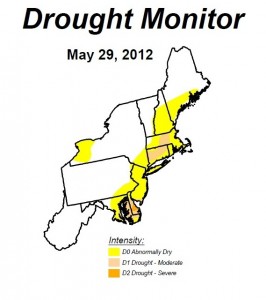 The New England drought: abating but not gone. The weekend rains helped, but as the attached map shows that we’re still not in good shape in New England. While eastern Massachusetts is now considered ‘only’ abnormally dry (with drought conditions in central Massachusetts), a few weeks without rain can change things dramatically. If you’ve been practicing water conservation this spring, continue to do so. If you haven’t. now is the time to begin. Many towns have imposed watering bans because the water tables from which town wells draw daily water are well below normal.
The New England drought: abating but not gone. The weekend rains helped, but as the attached map shows that we’re still not in good shape in New England. While eastern Massachusetts is now considered ‘only’ abnormally dry (with drought conditions in central Massachusetts), a few weeks without rain can change things dramatically. If you’ve been practicing water conservation this spring, continue to do so. If you haven’t. now is the time to begin. Many towns have imposed watering bans because the water tables from which town wells draw daily water are well below normal.
Lawn care. No more fertilizing the lawn until fall! Fertilizer promotes vigorous top-growth at a time when the rainfall will be decreasing and when the increasing heat is telling the grass to slow down. Forcing blade growth now puts the lawn under stress, making it more susceptible to disease and insect damage throughout the summer.
Keep planting annuals. While some stores have been selling summer annuals for weeks (or even months) now is the time to look for fresh-from-the-grower, healthy plants for your yard and containers. Most of our summer annuals are tropical plants that do not appreciate any cool weather. Waiting until now means the plants can begin growing immediately because the conditions are right. Add a timed release fertilizer when planting, or water weekly with a dilute
solution of liquid plant fertilizer, especially for those in containers.
Use annuals to fill in places in perennial beds where plants have been lost or just to try a new look. In addition to flowers, consider grasses and foliage plants like elephant ear or caladium for a different look.
Don’t grow weeds. Of course no one sets out to grow weeds, but we create the perfect environment for them to thrive. What’s a gardener to do? We don’t want to poison our soil with herbicides and weeds won’t die of drought or starvation because they are adept at stealing water and nutrients from our other plants. Moreover, weeds never have as many insect enemies as the plants we want to grow.
The best solution – indeed, the only solution, is to pull, hoe and mulch. In the vegetable garden or the flower garden, remove the weeds by the best method at your disposal without disturbing the plants you want. Between rows, use a scuffle hoe. Between plants pull individual weeds and cover all open ground with mulch. Cover the soil around hot weather crops such as tomatoes, melons, squash and cucumbers, with plastic. Use cardboard or newspapers in the rows between vegetables or around individual plants use heat-treated straw or grass clipping–only from untreated lawns! Clippings from treated lawns usually include herbicides such as ‘weed & feed’ which can kill your vegetables.
In your ornamental beds, you need to practice regular hand weeding. Go after them now and there will be many fewer in the summer. Use wood or bark mulch, shredded leaves or compost around flowers, trees and shrubs. Mulch two inches thick will stop the germination of weed seeds. Thicker mulch is not better; four inches or more will soak up water before it reaches the roots. Never place the mulch against the stem of the plant. It will hold moisture there and provide an entry site for insects and disease.
June 2011 Hints
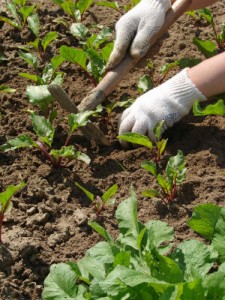 If you haven’t started your vegetable garden, it’s not too late. But do it this week. You’ll want to skip early season plants like peas, but certainly put in tomatoes, squash, green beans, carrots, peppers, melons, onions, and even lettuce (which will do best given a little shade during the afternoon). Be certain to water new seeds and plants well when Mother Nature leaves us dry. Mulching between rows saves moisture and discourages weeds. Keep mulch away from the stems of plants. Remember weeds are your enemy, not just a nuisance. They suck up water and nutrients, steal the sunlight and crowd the plants you want to grow. Pull and hoe while they are young and small.
If you haven’t started your vegetable garden, it’s not too late. But do it this week. You’ll want to skip early season plants like peas, but certainly put in tomatoes, squash, green beans, carrots, peppers, melons, onions, and even lettuce (which will do best given a little shade during the afternoon). Be certain to water new seeds and plants well when Mother Nature leaves us dry. Mulching between rows saves moisture and discourages weeds. Keep mulch away from the stems of plants. Remember weeds are your enemy, not just a nuisance. They suck up water and nutrients, steal the sunlight and crowd the plants you want to grow. Pull and hoe while they are young and small.
Rhododendrons are in glorious bloom now. After the flowers fade, snap off the dead florets, saving the plant the energy used in making unnecessary seeds. New leaves on long stems are popping out all over the rhodies now. If the plant is getting too large for the space, or growing in a direction you don’t want, now is the time to prune these off. By removing the new growth now, you won’t risk taking off next year’s flower buds in a later pruning.
Peonies are in the midst of their annual show. Many peonies bring fragrance to the garden along with large splashes of color. If you didn’t install peony rings or cages before the plants grew too large, use bamboo stakes to tie up individual blooms. The large flowers often snap over from their own weight. Remove the dead flowers when the season has passed and you’ll have a lovely shrub for the remainder of the summer. And, don’t fret over the ants you see on the buds. They are eating the waxy coating that protects the buds, not harming the flowers at all. If you want to bring peonies in the house, either cut them when the bud shows color, but before it opens, or gently place the peony flower in a bucket of water. After several minutes, all of the ants will have ‘deserted ship’.
If you have deer in your neighborhood, protect your delicious shrubs and perennials now. The new fawns will browse on everything. There are commercially available sprays that put down vile-smelling concoctions of putrefied eggs and garlic. Those sprays become odorless to us when they dry, but the nasty taste remains to any creature that nibbles on leaves. A monthly spraying of the garden will teach deer and rabbits to stay away from your plants.
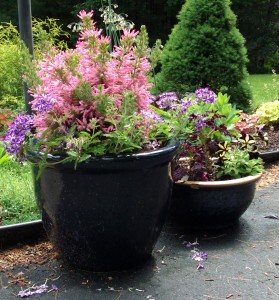 It’s also time to assemble containers. Annuals, perennials and tropical plants can all go in now that we are past the risk of a late frost. As you plant, experiment with new combinations and unusual cultivars. Small shrubs look great in large containers—and you can grow those not hardy in the ground in New England such as hibiscus or crape myrtle. Use cannas or bananas for big impact. Plant tiny miniature hostas in a small pot that you can put up on a table or wall where they are easily seen. Placing annuals and perennials together in the same container will provide color well into autumn.
It’s also time to assemble containers. Annuals, perennials and tropical plants can all go in now that we are past the risk of a late frost. As you plant, experiment with new combinations and unusual cultivars. Small shrubs look great in large containers—and you can grow those not hardy in the ground in New England such as hibiscus or crape myrtle. Use cannas or bananas for big impact. Plant tiny miniature hostas in a small pot that you can put up on a table or wall where they are easily seen. Placing annuals and perennials together in the same container will provide color well into autumn.
If you want to keep garden perennials from getting too leggy and flopping over as the summer goes on, cut them back by one-third to one-half now. Mums, phlox, salvias, asters and even autumn joy sedum all benefit from the trimming. You will get flowers slightly later, but there will be more to enjoy — plus, you won’t have to spend time staking them.
***************
Our (average) last frost date has now passed so it’s time to put out your tender annuals and vegetables. Whether you are planting geraniums and impatiens or elephant ears and tuberous begonias, annuals can now be safely put in the ground or in containers. Remember that ‘dead heading’ – removing spent flowers – is what keeps annuals blooming. As you plant, also think about mulches: pine needles, shredded bark, and leaf mold are all attractive and beneficial mulches that reduce weeds and preserve water—but only 2 to 4 inches please!
In the vegetable garden it’s time to put out your tomatoes, peppers, eggplant, melon, summer and winter squash, and corn. Use cutworm collars on tomatoes, eggplant and peppers. These can be made from frozen orange juice concentrate containers or even cardboard paper towel rolls. This little bit of extra care can prevent damage to susceptible plants.
As the days get longer and hotter, make certain your garden goes not dry out. Our recent rainy spell has been good for soil moisture, but it’s that top twelve inches that are of most importance to the gardener. Vegetables under stress will not provide the produce you are growing them for, and hot sun and drying winds can quickly parch the soil your plants depend upon. And keep up your weeding. Weeds are your plants enemies, stealing water, nutrients and sunlight. Straw or weighted newspapers placed between rows effectively block most weeds. Early crops like rhubarb and asparagus need to be side-dressed after the harvest is finished. Use 10-10-10 or composted manure. They are heavy feeders and need to replenish their reserves.
Cover blueberries and raspberries with netting to prevent the birds from getting your crop. Birds keep just as close an eye on your crop as you do, and they’re willing to take the berries a day early!
When your rhododendrons (and remember azaleas are rhododendrons) are finished blooming, remove the dead flower heads. It’s also the time to prune any spring bloomers before they set next years flowers.
When your bearded iris finish blooming, they can be safely divided. Dig up the entire clump of tubers and divide it into two-armed ‘fans’. These will provide a good display next year. Because you have reduced the roots, also cut the foliage back by half. And be certain to discard any tubers that show signs of iris borer infestation.
Your vegetable garden should be well underway now. The ‘warm weather’ crops – such as tomatoes and peppers – should now be planted while the early crops (lettuce, onions and peas, for example) are already producing or nearly so. Keep vegetable gardens from drying out with regular, deep watering Providing only a little water promotes shallow roots which dry out quickly during hot and windy days. Deep watering promotes deep roots that can sustain a plant during the scorching days that are sure to come in July and August.
Keep in mind that vegetables are generally heavy feeders. Even gardens that are well prepared with organic material need a fertilizer boost to produce large crops of tomatoes, corn and melons. Whether you use organic or inorganic fertilizer, remember to add no more than the recommended amount, and choose a fertilizer low in nitrogen (the first number in the three-number sequence on the package, such as ‘5-10-10’). You do not want to promote lots of foliage. Place it as a ‘side dressing’ to the plants, not directly on the root zone.
Speaking of corn, if you get great stalks but low yields, it may be because of the way you plant. Because corn is wind pollinated, it should always be planted in squares or rectangles with at least five rows in each direction. One or two rows of corn are insufficient to ensure good pollination.
The days and nights are now warm enough to move houseplants out for a summer vacation. As you place them outside, start in the shade of a tree or on a porch. Move them very gradually into more sun to avoid sun scald or even death. Wind and heat combine to quickly dry out containers so check frequently to ensure that your houseplants have sufficient water in their new environment. If you choose to replant now, remember the new pot should be no more than two inches larger than the old.
Company coming and no time to weed? Edging your beds is a fast way to make a great impression and it creates a crisp, clean look.
As the blooms of peonies, irises, rhododendrons and other plants fade, removing the spent blossoms has two benefits. First, it saves the plants the energy that would otherwise be used to produce seeds that are not useful to the gardener. Second, with plants such as peonies, dead blooms can lead to botrytis blight.
Late June is the peak season for roses. Invite friends and plan parties to share the beautiful flowers and lovely scents of your collection. With a seemingly endless variety of roses to choose from,.there are roses suitable for every garden and gardener. If you don’t know where to start, check out the new, low-maintenance varieties
